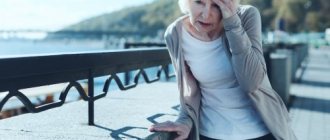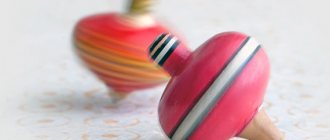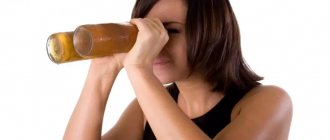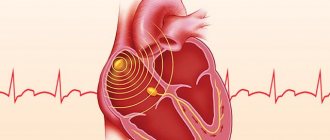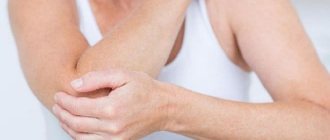Stroke, or acute cerebrovascular accident, remains one of the leading causes of death. Practice shows that in 60% of cases the lesion is localized in the left brain structures, which control the activity of the right half of the body, where paralysis occurs. Just a few minutes of stopping blood flow is enough to kill millions of neurons and create a dead zone in the nervous tissue. The pathological process involves the pathways of CNS signals to systems and organs on the right.
Kinds
Neurology defines two types of stroke with paralysis of the right side:
- Ischemic stroke. Occurs due to blockage of cerebral vessels by atherosclerotic plaques and blood clots. In the area of circulatory arrest, a focus of brain tissue necrosis occurs. The severity of subsequent paralysis and the ability of the central nervous system to compensate for lost functions depend on its location and size. The disease most often threatens hypertensive patients, diabetics, smokers and anyone with high cholesterol, thrombophlebitis, blood thickening, or problems with heart rhythm. Attacks of tachycardia or atrial fibrillation can provoke the formation of blood clots in the heart cavity, which enter the brain vessels with the blood flow. This type of stroke develops over 2-3 days or longer, so it has specific diagnostic features.
- Hemorrhagic stroke. It is characterized by a rupture of the vascular wall and a breakthrough of blood into the brain tissue, which dies from ischemia. It is provoked by a hypertensive crisis, specific aggregate states of the blood, diseases that cause pathological changes in the structure of blood vessels. Hemorrhagic stroke develops rapidly, quickly causing a coma in the patient. This diagnosis entails the most severe consequences.
The practice of neurology shows that strokes with paralysis of the right side are easier and the consequences are eliminated faster. This is explained by the fact that ischemic stroke more clearly manifests the onset of the disease with characteristic signs.
Make an appointment
Causes of development of right-sided stroke
The most common causes of the development of right-sided hemorrhagic strokes are atherosclerotic changes in the cerebral vessels of the right hemisphere, as well as a significant increase in blood pressure (in particular, against the background of hypertension). A sharp jump in blood pressure due to pathological changes in the vascular wall leads to rupture of the vessel. Right-sided ischemic stroke, as a rule, develops due to blockage of a vessel and disruption of the blood supply to a separate area of the brain.
Types of paralysis on the right side
According to the nature and localization of vascular accidents, the types and subtypes of paralysis are classified:
- Central paralysis. It develops when the areas of the brain and spinal cord responsible for the function of movement and the state of the neuromuscular complex are damaged. Characterized by specific spastic reactions. With the central form of paralysis, all muscles are affected, which are in constant tension, and when calm they show clonus - rhythmic twitching, mainly in the area of the knees and feet. In many areas, diagnostic reflexes are absent or weakened.
- Peripheral paralysis. With this type of stroke, a decrease or absence of neurological reflexes develops. The tone in the muscles is not determined, they atrophy, decrease in mass, patients lose the ability to move, self-care and generally do any activity. The main task is to restore the conduction pathways of impulses from the brain and spinal cord to the neuromuscular system. By the nature of the pathological symptoms and the areas of their location, it is possible to determine which segments of the central nervous system are out of order.
Causes
The main cause of right-sided paralysis is strokes, chronic and then acute disturbances of blood supply in the structures of the left hemisphere.
A stroke is not a disease that happens suddenly. Its causes accumulate over years, decades, so that when a critical point is reached, one day the scenario of a “vascular catastrophe” unfolds. This leads to:
- Physical inactivity;
- Diet with a predominance of animal fats and proteins;
- Metabolism, carbohydrate and cholesterol status disorders;
- Limited or inadequate sleep;
- Abuse of tobacco, alcohol, drugs;
- Chronic or severe one-time stress.
Eliminating at least half of these causes will allow stroke to be removed from the list of major diseases that most often suffer in our time.
Expert opinion
Author: Ekaterina Dmitrievna Abramova
Neurologist, director of the chronic pain clinic
According to the Federal State Statistics Service, stroke ranks second in the structure of mortality. This is a dangerous neurological disease, the incidence of which is increasing every year. Statistics show that acute cerebrovascular accident occurs in every third person per 1000 population. Stroke in 60% of cases leads to disability. Due to severe complications, 10% of patients completely lose the ability to self-care. The appearance of persistent paralysis is associated with extensive brain damage.
A stroke requires immediate diagnosis and correct treatment. At the Yusupov Hospital, examinations are carried out using the latest medical equipment: CT, MRI. Thanks to them, it is possible to accurately determine the location of the pathological focus. Doctors at the Yusupov Hospital develop an individual treatment and rehabilitation plan for each patient. The drugs are selected in accordance with the latest European recommendations for the treatment of strokes. Conservative treatment can be supplemented with surgical intervention if indicated. In addition, to speed up recovery, physiotherapy and a course of physical therapy are prescribed.
Types of paralysis
When a person is admitted to hospital with a stroke, it is important to determine from the outset whether they have paralysis and what its nature is. Paralysis in all parts of the body (left and right sides) is divided into 2 groups.
- Peripheral paralysis. This is a milder form of the disorder, accompanied by selective loss of body function. In this case, motor nerve cells are damaged, numbness occurs, and the person cannot perform complex actions.
- Central paralysis. This condition is associated with the formation of a hematoma in the areas of the brain responsible for movement. This causes complete paralysis of the right leg or arm. Such patients lose the ability to self-care and may remain disabled for life.
Symptoms
The signs of the onset of an illness are beyond doubt; not only doctors, but also ordinary people should know them in order to help their loved ones, acquaintances, or just a person on the street who has become ill in time. You should call the emergency room immediately if you experience the following symptoms:
- Sudden loss of speech (or when it becomes slurred);
- Inability to move an arm or leg;
- Inability to smile (the right side of the mouth sags);
- drooping eyelid;
- State of stupefaction, spatial and temporal disorientation, the patient complains of “mess in the head”;
- Severe headache with vomiting, dizziness;
- The extended right leg turns the foot inward;
- The right arm is bent and pressed towards the body.
Signs of right-sided paralysis
If there was a stroke in the left hemisphere, the patient’s right side of the body is affected, the muscles of the limbs are paralyzed and there is no speech. These are the main differences between this condition. Patients also develop the following symptoms:
- Common symptoms are headache, nausea, vomiting and weakness. They appear in the first few days and are considered the body’s response to damage to brain neurons;
- Loss of movement - with central paralysis, the right limbs are flaccid, there is no sensitivity, the patient cannot perform any actions with the right arm and leg. If peripheral neurons are affected, the patient experiences tremor, and some movements are difficult on the same side;
- Reduced memory – there are difficulties in remembering sentences; in severe cases, it is difficult for a person to repeat individual words;
- Paresis of the right facial nerve - this branch innervates all facial muscles on its side. In the absence of control, the muscles relax, the patient’s corner of the mouth and lower eyelid “hang”;
- Spontaneous contractions of some skeletal muscles on the right - usually the arm is bent at the elbow joint, the leg is straightened, and inward rotation of the foot is noted.
The listed symptoms are observed a few minutes after hemorrhage. As health deteriorates, the patient develops stress, accompanied by depression and difficulties in communication.
Post-stroke speech dysfunction
Speech plays one of the most important roles in human life. Certain areas of the cerebral cortex are responsible for the speech apparatus. Damages to brain structures, which include acute circulatory disorders, lead to serious disorders. A person who has had a stroke:
- puts words in the wrong order;
- cannot remember the names of objects;
- does not understand the people who approached him;
- cannot pronounce some sounds;
- loses the ability to express his thoughts clearly.
Speech impairment is long-term, but can be corrected. There are also cases when speech is restored gradually on its own. Unfortunately, this happens extremely rarely, and the patient cannot do without rehabilitation under the supervision of doctors and relatives.
Why is speech function impaired?
A person's inability to speak clearly after a stroke is called aphasia. This condition is the result of:
- rupture of neural connections;
- severe disruption of neuronal nutrition;
- hematoma pressure on nerve tissue.
Based on the complexity of the lesion, it is possible to predict how quickly the patient will recover speech after a stroke. The extent of the lesion also plays a key role: the larger it is, the more complex the aphasia. In addition, the main criteria affecting the restoration of articulation include:
- affected area;
- timeliness of treatment;
- quality of rehabilitation measures.
Types of speech disorders
When a blood vessel ruptures in the brain, speech functions are first affected. With hemorrhage, various articulation disorders appear. In addition to aphasia, there are other types of speech dysfunction:
- dysarthria;
- dyspraxia.
How to restore speech abilities after a stroke
One of the main roles in the process of acquiring lost speech abilities is played by early access to a doctor. Help for the patient should be provided in the first hours after a stroke. It is also important to establish which aspects of speech have been damaged. The specialist must conduct diagnostic tests on the basis of which he makes a conclusion.
Rehabilitation methods for improving speech after cerebral hemorrhage are presented:
- taking certain medications;
- exercises to restore pronunciation;
- speech therapy;
- additional measures: surgery, physiotherapy, massage.
The success of rehabilitation also depends on the general environment in which the patient lives. He needs a peaceful atmosphere, away from noise and harsh sounds. Stress and worry will only slow down your recovery.
What is the danger?
The danger of a stroke lies not in the side of the lesion, but in the vastness of the focus involved in the process of ischemia or hemorrhage. The speed of providing first aid is of great importance: the sooner it is provided, the better the patient’s prognosis for replenishment of lost functions and recovery. The best results are obtained by timely and comprehensive organization of restoration procedures, which are developed in each individual case and complement each other.
The Center for Progressive Medicine “Doctor Pozvonkov” has in its arsenal all the necessary techniques for the multidirectional restoration of a person’s lost motor, sensory, speech and mnestic capabilities. All patients who have suffered a stroke require full rehabilitation, regardless of the location of the lesion. Coordinated interactions with doctors significantly reduce the percentage of disability among victims.
Treatment
Thanks to the efforts of healthcare organizers, the system of stroke treatment in Russia has undergone positive changes. It has become the norm to transport patients with suspected cerebral circulatory disorders to an intensive care bed or neurosurgeon's table within three hours.
Treatment for stroke, when the right side is paralyzed, begins in the intensive care unit, where patients are hospitalized urgently. The treatment regimen provides for the normalization of blood circulation in the brain, restoration of respiratory and swallowing functions, and elimination of the threat of convulsive phenomena.
The treatment regimen for hemorrhagic stroke with paralysis of the right side is somewhat different. In this case, drugs that eliminate thromboembolism come to the fore. If treatment is started on time, the blood clot is destroyed and impaired blood flow is restored. Thanks to modern medications, it is often possible to completely avoid the consequences of a stroke.
The patient's condition requires normalization of homeostasis, a decrease in the degree of permeability of the vascular walls and the formation of plasmin. In some cases, blood clots from brain vessels are removed surgically in neurosurgery departments.
Useful tips
Some recommendations for caregivers after a right-sided stroke:
- Approach the victim from the left side. This makes a person more susceptible to objects placed on the left.
- Try to slow down the person if they are moving too quickly. Moving too quickly can cause injury.
- To stop or limit inappropriate behavior, sit next to the patient, place your hand on his, and talk slowly in a quiet but confident voice.
- Ensure strict adherence to the daily routine, maintain a daily routine of performing the same actions. Repeated repetition will help restore memory function.
- Give the victim reminders and simple directions to finish the task at hand. Insist on completing the task. Pay the patient's attention to the small details of the work being performed.
- Indicate the real-life consequences of a stroke and the existing limitations. However, do not exaggerate their catastrophic nature. A realistic assessment of the situation increases a person’s awareness, preventing him from overestimating his abilities.
Lifestyle
Stroke is a disease in which a person must start life in new conditions. Most people find it difficult to accept their condition, so deep depression is as dangerous a complication as the physical manifestations. Already in the first stages of recovery, much attention is paid to this aspect.
The scientific, material and technical base of the Yusupov Hospital allows patients to undergo rehabilitation procedures using modern equipment that meets European standards.
Right side massage
Recovery after a stroke with paralysis of the right side with the help of massage begins on the 20th day of illness. This is an average date; the severity of the patient’s condition, age, concomitant diseases, etc. are taken into account.
The first massage sessions begin with gentle stroking of the limbs, back and neck muscles. The intensity of the effect increases from session to session, the massage therapist’s actions are aimed at restoring normal blood circulation and sensitivity in the affected part of the body.
Rehabilitation
The main goal of rehabilitation after a stroke is the return of movements in the right side of the body, speech and other cognitive abilities. First of all, the patient is recommended to follow a certain diet, go to massage, physiotherapy and consult a speech therapist.
Diet
In order for blood flow and other body systems to recover faster, you need to limit yourself to certain foods and focus on healthier foods. The body must receive all the necessary substances with food to restore damaged tissues.
dieta-after-insulta
When preparing a diet, you should adhere to a number of conditions:
- do not eat smoked meats or foods high in fat;
- meat products should be consumed lean, in small quantities (preferably in crushed form) and only after consultation with a doctor;
- eat more fresh fruits and vegetables;
- do not drink drinks high in caffeine, sugar or alcohol;
- eat food often, but in small quantities.
In case of serious consequences of a stroke, the products should be selected by a nutritionist, taking into account the patient’s health and level of energy consumption.
Massage
Massage is necessary to prevent the formation of bedsores, so it is prescribed from the very beginning on a daily basis. During the procedure, the entire right side of the body is warmed up. This helps normalize blood flow, molecular processes in cells and joint functions.
Therapeutic massage of the paralyzed part includes:
- stroking the body from the limbs towards the blood flow;
- rubbing the skin is carried out in the same direction, but more actively;
- creating vibration in the softest places;
- repeated stroking at the end of the session.
You can avoid the development of bedsores if you carry out similar actions every day. It is also important to frequently shift the patient, changing his position, and rub with alcohol (if there are no skin disorders).
Physiotherapy
Physical therapy is prescribed after 2 or 3 weeks from the moment of the stroke, if the patient is clearly on the mend. Physical education is prescribed to achieve a number of goals:
- reducing the risk of muscle atrophy;
- increasing the ability of nerve tissue to transmit impulses to muscles;
- regaining the ability to control the body and take care of oneself independently.
lechebnaya-fizkultura
The most effective physical therapy is prepared by a specialist who can select exercises to restore certain abilities.
Fighting bedsores
Bedsores are a dangerous enemy of bedridden patients who have to remain in bed for long periods of time. Bedsores appear in areas that are subject to the greatest pressure - the tailbone, shoulder blades, buttocks, legs, forearms.
Bedsores in advanced stages require surgical treatment. There are cases when a patient was saved in intensive care, but then, due to poor care, he died from sepsis that developed from banal bedsores. Nursing after a stroke is exactly the case when an experienced and conscientious nurse is just as important as a doctor. And sometimes it’s even more important.
Rules for bed rest after a stroke in an elderly person
After an attack, a person is hospitalized, so it is important to familiarize yourself with the definition of bed rest. It doesn’t matter at all with what severity of stroke the elderly person was admitted to the hospital - in the first few weeks, and sometimes even months, it is extremely important to lie down more time and reduce any bodily movements to a minimum.
After an ischemic stroke, the most common, unilateral damage is possible, in particular paralysis. The main thing is not to panic and convince the victim that with a reasonable approach to the problem and proper treatment, the lost functions will quickly be restored.
Hospital treatment and rehabilitation after a stroke in an elderly person implies compliance with important rules:
- Under no circumstances should the patient remain in one position for a long time; this is dangerous due to the appearance of bedsores, which will greatly complicate rehabilitation.
- It is necessary to turn the patient over regularly; experts recommend doing this approximately once every two to three hours.
- To restore motor skills and complete recovery, it is important to do therapeutic exercises.
- It is necessary to maintain correct body position.
Please note that an elderly patient will spend a long time in a supine position. Therefore, it is important to provide him with comfortable conditions for the shoulder joints, so that their mobility is preserved. Otherwise, soon the soft tissues and joints will begin to numb, and the elderly person will experience pain in these areas.
In a supine position, the injured arm should be at an elevated level. It is best to use a pillow or cushion for this. You can achieve the maximum effect by placing a small salt bag weighing up to 500 grams. The visible result from the above manipulations should be as follows:
- An elderly patient's arm does not bend at the elbow.
- Keeping your fingers aligned is especially important.
- The distance between the torso and shoulder should be the same and unchanged.
Pay attention to the rules of leg position during primary rehabilitation after a stroke in an elderly person:
- A special cushion should be placed under the legs of an elderly patient. This way you will achieve the desired elevation angle of 15–20 degrees, necessary for proper blood supply.
- There are also special foot rests. When using such a device, you need to check that it is in the neutral position.
Important note: for the patient to be in the correct position, both legs - both the injured and the healthy ones - must lie equally.
Following these rules is vital for proper rehabilitation after a stroke in an elderly person.
If the patient is lying on his side, other recommendations must be followed. Due to the fact that after hemorrhage only one side is paralyzed, the victim must lie in two positions - on the healthy side and on the sick one.
If an elderly patient is lying on the healthy side, place a support under the limbs and a pillow under the sore side. Pre-bend the non-working joints.
If an elderly patient is lying on the paralyzed side, you need to tilt his head down, but not too much. The paralyzed arm must be straightened and the palm placed on the body. In this position, the injured arm should be bent at a right angle, and the healthy arm should be pulled back.
We recommend
“Examination of an elderly person - which doctors should be seen regularly” Read more
How long does it take for speech to be restored?
Rehabilitation of speech functions usually begins a week after the rupture of a blood vessel in the brain, provided that the patient’s condition is stable. However, there are situations when the patient is not able to start exercising even after a month. One way or another, rehabilitation therapy should begin no later than two months later. Otherwise, it will be much more difficult to regain lost abilities.
It is very difficult to give an accurate forecast regarding the time of speech recovery after a stroke. Rehabilitation is a step-by-step process with a clear sequence. The duration of each stage varies and is individual for each patient. On average, the maximum improvement in speech abilities is observed in the first six months after the illness. The entire recovery period lasts from three to five years.
Nutrition and swallowing rehabilitation
We recommend
“Centers for pensioners: what they are and how to get there” Read more
Sometimes, as a result of an attack, people can feel the taste and amount of food in only one half of the mouth. An elderly patient will have to relearn how to chew and swallow. There is a special set of exercises to restore the swallowing reflex:
- Imitation of swallowing movements.
- Imitation of yawning, while it is important to open your mouth as wide as possible.
- Gargling with plain water.
- Imitation of cough.
- Puff out your cheeks and hold your breath in this position for a few seconds.
- Pronouncing the sound “i” and tapping the larynx at this time.
During rehabilitation after a stroke, staff and loved ones of the patient must comply with basic nutritional requirements. Damage after illness can also affect the body's ability to take in and digest food. Therefore, it is important to provide the victim with proper nutrition and feed him independently. The elderly patient himself will not be able to even bring food to his mouth, and sometimes this can be very dangerous.
Food can only be served from the working side; its consistency must be soft!
Make sure the older person has time to chew and swallow a portion before giving him another.
Check the temperature of the food, do not give too hot or cold food, this can lead to spasms and cramps of the esophagus.
The main thing in the diet of an elderly person who has suffered a stroke is to follow a diet, the principles of which are to exclude or consume very small amounts of animal fat and salt.
Partial abstinence from animal fats helps lower cholesterol in the blood, and this will help avoid a recurrent attack. Reducing the amount of salt consumed normalizes blood pressure. When it is normal, the restoration of body functions after a hemorrhage is more effective and faster, and further damage to brain neurons is prevented. Another important effect of proper nutrition is weight loss.
We recommend
“A set of exercises for older people: body and breathing” Read more
Complications
Neurologists have to deal with numerous complications of the physical and psychological state of a stroke, which include:
- Gross disturbances of mental, cognitive, speech activity;
- Perceptual inhibition;
- Inflammatory phenomena of the bronchopulmonary, genitourinary system due to congestion in an immobilized patient;
- Depressive states with suicidal statements.
These manifestations require the closest attention and active therapy from specialists in various fields.
The Yusupov Hospital has a full range of rehabilitation equipment, including innovative ones, and a staff of highly qualified specialists who are proficient in modern techniques and types of massage and physical therapy. Their efforts, led by the country's best neurologists, are helping people recover from stroke paralysis.
Other methods of rehabilitation after a stroke in an elderly person
1. Rehabilitation with the help of drugs.
This type of recovery is based on the use of various manipulations and injections that regenerate the lost capabilities of the human brain. Medicines prescribed after hemorrhage work to improve blood flow through the vessels of the brain (nootropic drugs). They also have a positive effect on the metabolism in brain neurons and on the analytical and synthetic work of the cerebral cortex.
2. Massage.
Massage for rehabilitation after a stroke of an elderly person consists of several stages: the patient is placed on his back, the paralyzed arm is moved to the side and fixed at the level of the shoulder joint. It is important that the hand and forearm are extended. Next, carefully massage all the folds, joints of the fingers, hands, and elbows. Movements should be slow and careful, without causing pain or tone.
The injured leg should be massaged in the same way as the arm. You need to place a pillow or a towel cushion under your knee.
3. Special simulators.
Fortunately, in modern stores you can find any auxiliary simulators for restoring motor skills. They help rehabilitate an elderly person at home or in a boarding house, even if he is unable to get out of bed. The operating principle of such devices is as follows: training damaged or paralyzed limbs that lack sensitivity. With the help of special devices, you can develop joints, activate the functioning of nerve endings and return the body to its previous healthy state.
The visible effect of rehabilitation after a stroke in an elderly person is provided by such simulators as:
- step trainer;
- bars for pull-ups (for working the muscles and joints of the arms and forearms);
- a hill for climbing and walking;
- weighted walking bars.
Only the doctor determines the set of necessary exercises, their duration and intensity.
4. Therapeutic physical education (physical therapy).
Today, there are many different methods for rehabilitation after a stroke of an elderly person. Exercise therapy is recognized as the most effective of them.
The set of exercises necessary for an elderly patient is selected individually. Among them may be:
1. Passive exercises. They should be performed with the help of a medical professional or a trained loved one:
- massage treatments;
- flexion of the joints of the legs and arms;
- raising and lowering limbs;
- fist clenching.
2. Exercises on a chair - suitable for patients who can sit:
- rotations and tilts of the head;
- imitation of the grasping function - clenching and unclenching a fist;
- special breathing exercises with squeezing and spreading of the shoulder blades.
3. Exercises in a standing position:
- hands rise up as you inhale and fall down as you exhale;
- a game involving a tennis ball, arms extended forward, fingers closed.
- alternately raising and lowering your legs on the chair seat;
- standing on tiptoes.
We recommend
“Gymnastics for the elderly: the best exercises for various diseases” Read more

